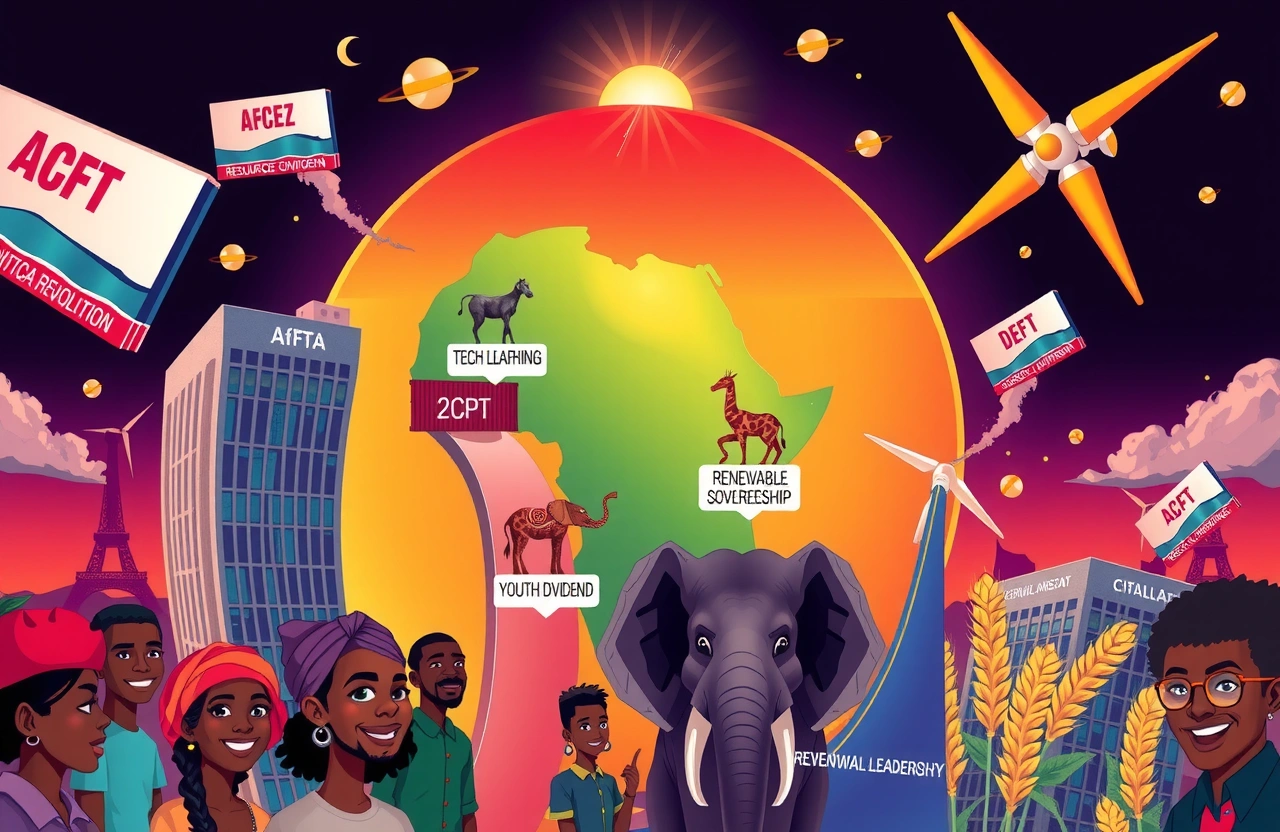The Dawn of an Economic Transformation
Financial capitals around the world are recalibrating strategies as Africa’s unprecedented economic ascent accelerates. Projections show the continent growing at twice the global average rate by 2025, with its GDP potentially reaching $16 trillion by 2050. This seismic shift represents more than growth—it signifies a profound economic realignment challenging Western dominance and creating new global supply chains.
African nations have transformed from aid recipients to investment powerhouses with initiatives like the African Continental Free Trade Area creating the largest single market since the World Trade Organization’s formation. As capital migrates southward, traditional market leaders face both disruption and unprecedented opportunities requiring strategic repositioning.
Catalysts Driving Africa’s Meteoric Rise
Several structural advantages converge to fuel Africa’s economic renaissance—factors that multinational corporations overlook at their peril.
Demographic Dividend
Africa’s youth population delivers unparalleled competitive advantages:
- Median age of 19 versus 42 in Europe
- Working-age population growing by 14 million annually
- Over 60% urbanization rate by 2050 predicted by UN-Habitat
Continent-wide educational investments are transforming this human capital. Rwanda doubled university enrollment in five years while Ghana launched comprehensive STEM education reforms preparing tomorrow’s tech leaders.
Resource Sovereignty Revolution
African nations are rejecting raw material exporter roles:
- DR Congo mandates local cobalt processing before export
- Ghana’s aluminum refinery adds 300% value to bauxite exports
- Morocco controls 75% of global phosphate reserves for fertilizer production
The Economic Commission for Africa confirms resource-backed loans have declined 70% since 2015 as countries leverage minerals for manufacturing growth rather than debt instruments.
Technological Leapfrogging Reshaping Sectors
Unencumbered by legacy infrastructure, Africa bypasses traditional development pathways to lead in frontier technologies.
Fintech Dominance
Africa leads the global mobile money revolution:
- M-Pesa processes $314 billion annually across seven countries
- Flutterwave achieved unicorn status with pan-African payment solutions
- 85% of Nigerian transactions now digital (Central Bank data)
The World Economic Forum reports African fintech funding grew 894% between 2020-2022, outpacing all other regions. This foundation supports emergent innovations like microlending and tokenized assets disrupting traditional banking models.
Renewable Energy Leadership
Africa controls key minerals vital for the green transition—but now leads deployment too.
- Egypt’s Benban Solar Park: World’s fourth largest at 1.8GW
- Kenya sources 92% of grid power from renewables
- Morocco exports solar energy to Europe via undersea cables
The IEA confirms Africa holds 60% of global solar potential yet requires $190 billion annual investment to achieve universal energy access—a massive opportunity for international partnerships.
The Great Economic Realignment Emerges
This seismic economic shift is triggering fundamental global restructuring.
Tectonic Investment Shifts
Portfolio rebalancing is already evident:
- BlackRock’s Africa portfolio doubled to $7 billion since 2020
- Middle Eastern sovereign funds invested $53 billion in African infrastructure last year
- Global pension funds now allocate 4.7% to African assets—up from 0.6% in 2015 (Mercer Study)
The investment vector shift represents not just capital movement but institutional validation of Africa as a core holding rather than speculative allocation. Project finance increasingly prioritizes manufacturing over extraction.
Trade Route Reformation
New corridors emerge as shipping lanes follow economic gravity.
- Djibouti’s $15 billion Damerjog port expansion anchors Indian Ocean routes
- Tanzania’s $10 billion Bagamoyo port alternative to disrupted Suez routes
- Johannesburg-Stock Exchange partnerships with Singapore Exchange for pan-Africa clearing
These developments enable continental synergies where South African manufacturing exports consumer goods to West Africa while Nigerian energy fuels East African industrialization—facilitated by AfCFTA’s tariff reductions.
Competitive Geographical Hotspots
Investment opportunities concentrate in rapidly developing zones and sectors.
Manufacturing Renaissance
Diaspora experts returning with technical skills fuel industrial growth:
- Nigeria’s Dangote Refinery (650k bbl/day capacity)
- Rwanda’s Volkswagen assembly plant serving 24 nations
- Ethiopian textile exports grow 18% annually
UNCTAD reports foreign manufacturing investment increased 135% across special economic zones focused on automotive and electronics production for global exports.
Agricultural Transformation
Africa’s vast agricultural potential is finally unlocking:
- Zambia’s $2.4 billion wheat expansion making Africa self-sufficient
- Agri-tech startups like Kenya’s Apollo boosting yields 300% with satellite irrigation
- Cashew processing plants reviving coastal economies
The AfDB projects agricultural exports could increase from $35 billion to $150 billion by 2030 through improved processing infrastructure.
Navigating Emerging Market Complexity
Success requires understanding distinctive risk landscapes and proactive mitigation.
Political Economy Dynamics
Effective operators balance local relationships and ESG standards:
- Local content laws require 40-70% domestic participation
- New mining codes mandate value-addition infrastructure
- Carbon-neutral requirements for energy projects
The African Development Bank’s Akinwumi Adesina notes: “The mindset of competitive tendering and good governance prevails in 80% of countries, creating unprecedented transparency for investors.”
The Path to Shared Prosperity
Africa’s transformation presents unparalleled opportunities but requires adaptation from global partners and policymakers. The continent’s consumer spending power will reach $2.5 trillion by 2030 while infrastructure gaps present $100 billion annual investment opportunities—an alignment of potential and need. This ongoing economic realignment demands strategic positioning.
Forward-looking investors already target high-growth sectors—fintech, renewable energy, and value-added agriculture—while building durable partnerships with African institutions. The transformation extends beyond numbers: Africa codifies new international trade protocols through AfCFTA arbitration centers and sustainable financing frameworks from the African Development Bank. This moment requires recognizing Africa not as emerging but emerged—a reconfigured center of gravity demanding engagement at boardroom tables and policy forums worldwide. Explore African markets today through trusted partners and position your organization where global growth converges.



